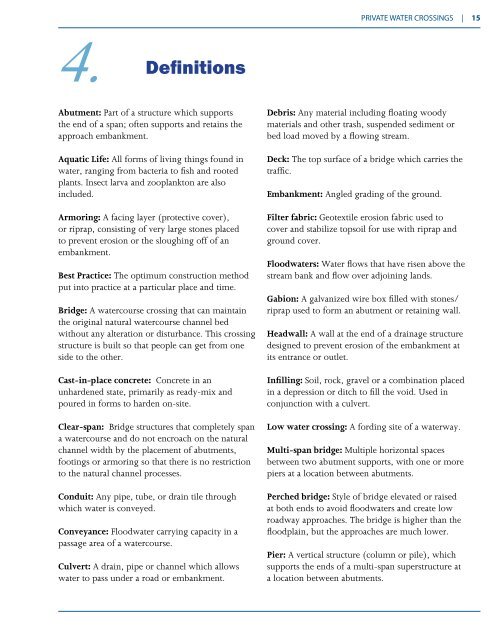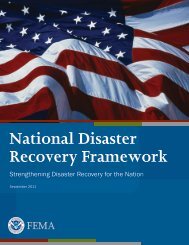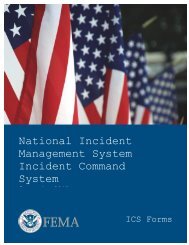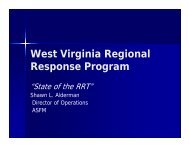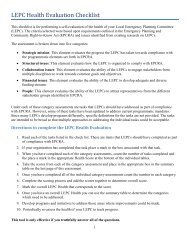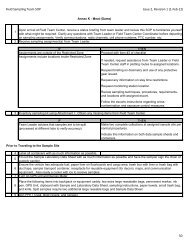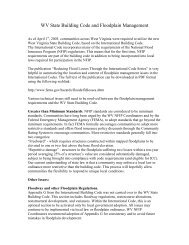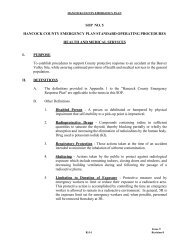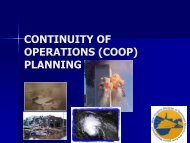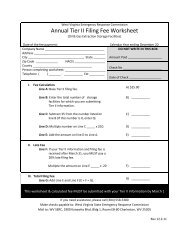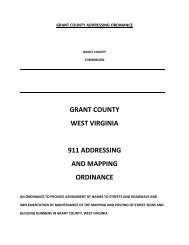Private Water Crossings: Considerations Before You Build
Private Water Crossings: Considerations Before You Build
Private Water Crossings: Considerations Before You Build
- No tags were found...
You also want an ePaper? Increase the reach of your titles
YUMPU automatically turns print PDFs into web optimized ePapers that Google loves.
PRIVATE WATER CROSSINGS | 154. DefinitionsAbutment: Part of a structure which supportsthe end of a span; often supports and retains theapproach embankment.Aquatic Life: All forms of living things found inwater, ranging from bacteria to fish and rootedplants. Insect larva and zooplankton are alsoincluded.Armoring: A facing layer (protective cover),or riprap, consisting of very large stones placedto prevent erosion or the sloughing off of anembankment.Best Practice: The optimum construction methodput into practice at a particular place and time.Bridge: A watercourse crossing that can maintainthe original natural watercourse channel bedwithout any alteration or disturbance. This crossingstructure is built so that people can get from oneside to the other.Cast-in-place concrete: Concrete in anunhardened state, primarily as ready-mix andpoured in forms to harden on-site.Clear-span: Bridge structures that completely spana watercourse and do not encroach on the naturalchannel width by the placement of abutments,footings or armoring so that there is no restrictionto the natural channel processes.Conduit: Any pipe, tube, or drain tile throughwhich water is conveyed.Conveyance: Floodwater carrying capacity in apassage area of a watercourse.Culvert: A drain, pipe or channel which allowswater to pass under a road or embankment.Debris: Any material including floating woodymaterials and other trash, suspended sediment orbed load moved by a flowing stream.Deck: The top surface of a bridge which carries thetraffic.Embankment: Angled grading of the ground.Filter fabric: Geotextile erosion fabric used tocover and stabilize topsoil for use with riprap andground cover.Floodwaters: <strong>Water</strong> flows that have risen above thestream bank and flow over adjoining lands.Gabion: A galvanized wire box filled with stones/riprap used to form an abutment or retaining wall.Headwall: A wall at the end of a drainage structuredesigned to prevent erosion of the embankment atits entrance or outlet.Infilling: Soil, rock, gravel or a combination placedin a depression or ditch to fill the void. Used inconjunction with a culvert.Low water crossing: A fording site of a waterway.Multi-span bridge: Multiple horizontal spacesbetween two abutment supports, with one or morepiers at a location between abutments.Perched bridge: Style of bridge elevated or raisedat both ends to avoid floodwaters and create lowroadway approaches. The bridge is higher than thefloodplain, but the approaches are much lower.Pier: A vertical structure (column or pile), whichsupports the ends of a multi-span superstructure ata location between abutments.


